What I’m reading and utilising this month to plan teaching and learning experiences… by AISNSW Teaching and Learning Consultant K-6, Carrie Alker
As a young girl, I read fervently. I can still recall how books such as Louisa May Alcott’s ‘Little Women’ and Frances Hodgson Burnett’s ‘The Secret Garden’ offered an imaginative escape from my rather grey, rather dreary, day-to-day life in the North of England. I also remember with fondness the vivid pictures they painted in my mind. Other favourites saw children my own age solving mysteries, visiting magical worlds, and experiencing perilous situations…all minus the watchful eyes of parents or caregivers.
I was drawn to ‘The Midwatch’, by ‘Withering-by-Sea’ author, Judith Rossell, after reading about her inspirations for writing the book. She was very keen to build a world of mystery, secrecy and adventure. Like me, Rossell was a Girl Guide in her youth and cites the Girl Guide movement as one of her catalysts. She states:
“I learned many useful things, like bandaging, knot-tying and Morse code, and felt sure I would rescue someone from a runaway train, or save a baby from bandits, or something like that. Unfortunately, 1980s suburban Melbourne did not give me the chance to have adventures like this, which was very frustrating. So, it was rewarding to send the brave and adventurous girls of the Midwatch Institute into danger, and see them solve mysteries, fight bad guys, and help to keep the city safe.”
How could I resist reading a book with such a premise? As I read (and thoroughly enjoyed) The Midwatch, I soon started to consider how it could be used to meet the outcomes and content of the English K-6 syllabus.
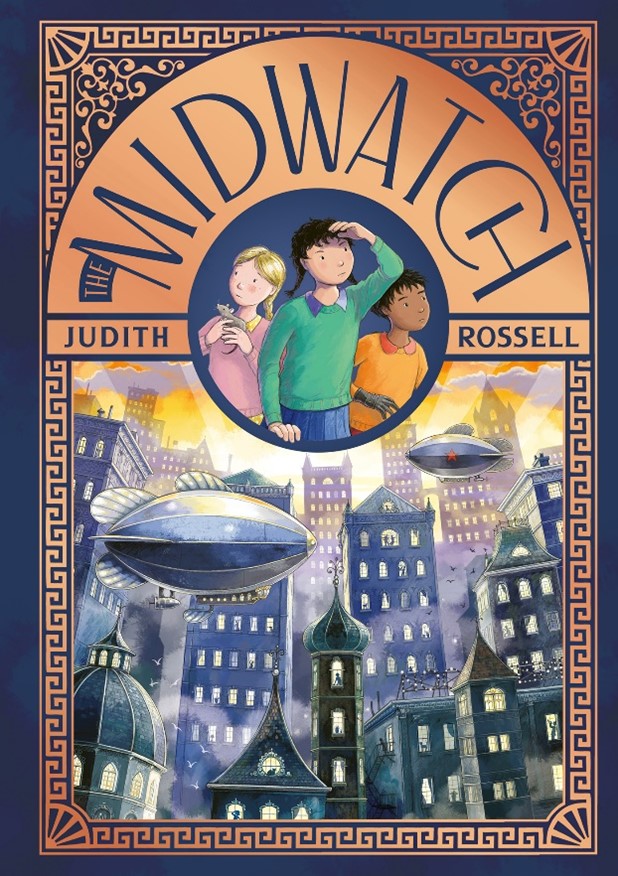
The Midwatch is an historical fiction novel set against the backdrop of the vibrant 1920s. Rossell writes of a time when courageous women were breaking free from societal constraints and forging new paths. She captures the era's exhilarating spirit of optimism, complete with its airships and towering skyscrapers, through her captivating prose and lavish illustrations.
At the heart of this story is Maggie Fishbone, a young girl banished to the notorious Midwatch Institute for Orphans, Runaways and Unwanted Girls. Initially feeling lonely and unsure about her future, she soon discovers solace and gains confidence through her friendships with Nell, Sofie, and Harriet. As the girls venture further into the depths of the Midwatch, they uncover secrets and unexpected revelations, propelling them into a remarkable journey.
Read on to discover ideas for addressing Stage 3 English syllabus outcomes and content using this beautiful book.
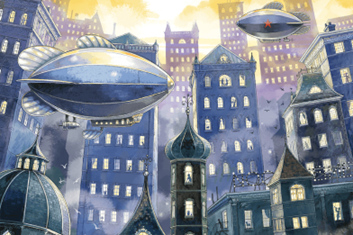
UNDERSTANDING AND RESPONDING TO LITERATURE
Character
(EN3-UARL-01) Recognise how character archetypes and stereotypes are represented in literature)
and
CREATING WRITTEN TEXTS
Sentence-Level Grammar
(EN3-CWT-01) Vary sentence structures or lengths when using simple, compound and complex sentences, with a focus on achieving clarity and effect suited to text purpose
In Stage 3, it is expected that students’ conceptual understanding will strengthen and that they will be taught how to make deeper connections between texts. One element of this in the Understanding and Responding to Literature focus area is the recognition of character archetypes and stereotypes. To address this content, teachers must ensure students have a solid understanding of what is meant by archetypes and stereotypes and that they are able to apply this knowledge when analysing texts.
Initially, students will need to understand that a character stereotype refers to a fixed or simplified image or idea of a particular type of person. Fairytales are a good place to start when introducing this concept. For example, women who are depicted as living alone in the forest, much like the witch from Hansel and Gretel, are often seen as old and wicked spinsters. We as readers are given little information about the motives, thoughts and feelings of stereotypical characters, and we can describe them as being flat and/or two-dimensional.
Can students think of examples of character stereotypes in books they have read recently or in the films they have seen?
Have students share their ideas and provide them with other examples of character stereotypes in books and films, and explain that you will be on the lookout for these when reading ‘The Midwatch’.
Once students have a secure understanding of character stereotypes, you might look to introduce explicit teaching of character archetypes.
Prior to reading The Midwatch, teachers could provide students with definitions and examples of common archetypes from known texts, such as:
- The Innocent
- The Everyman
- The Hero
- The Caregiver
- The Explorer
- The Rebel,
- The Lover
- The Creator/Artist
- The Jester
- The Sage,
- The Magician/Wizard
- The Ruler
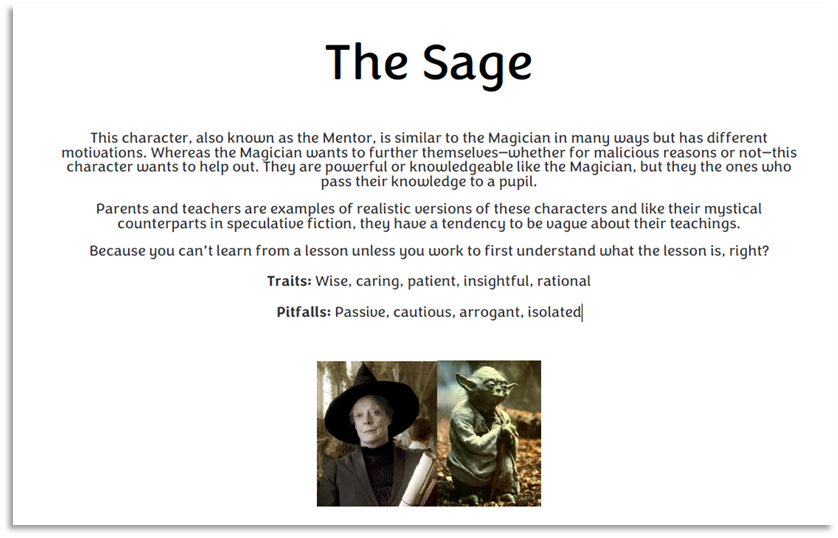
These two articles might be helpful for teachers wanting to learn more about archetypes:
As students engage with the text, they could complete the Writing Revolution’s ‘because, but so’ exercise to support their deep and analytical thinking about characters. This activity provides an opportunity for students to use conjunctions effectively in complex sentences. The bonus prize here is that this exercise offers a check of student comprehension of the text too!
An example might be:
Miss Mandalay is an example of ‘The Sage’ archetype because…
Miss Mandalay is an example of ‘The Sage’ archetype but…
Miss Mandalay is an example of ‘The Sage’ archetype so…
Have a go at completing this activity for some of the characters in The Midwatch before asking your students to do so, as this will help you to anticipate their responses. For some characters and archetypes, you might find they do not lend themselves to using all three conjunctions, and in these cases, provide only the relevant conjunctions.
UNDERSTANDING AND RESPONDING TO LITERATURE
Character
(EN3-UARL-01) Analyse attributes of character and use similar attributes when creating texts)
Part of the brilliance of Rossell’s writing is her character descriptions. She writes of Sister Immaculata feeling ‘lumpy and bony, as if she were made out of potatoes and cutlery’ and girls with ‘mousy hair in long straggly braids, tied off with a piece of string’. Each description conjures up powerful images in the mind, helps the reader to differentiate one character from another, and supports the reader to understand character attributes and traits. For Stage 3 students, strong examples of character writing in mentor texts are vital in supporting them to analyse texts and create rich characters, with depth, in their own writing.
To support students’ analysis of character attributes, it is important to explicitly teach them that we learn about character traits through dialogue and action, as well as how the characters are described. According to the example in the English Syllabus, ‘attributes may include how real and imagined characters resemble the way people act, think, feel and communicate’.
A good example of a well-written character in this book is the Midwatch Institute Director, Miss Mandalay. When reading the text, you could use the headings below to analyse and unpack this character with students.
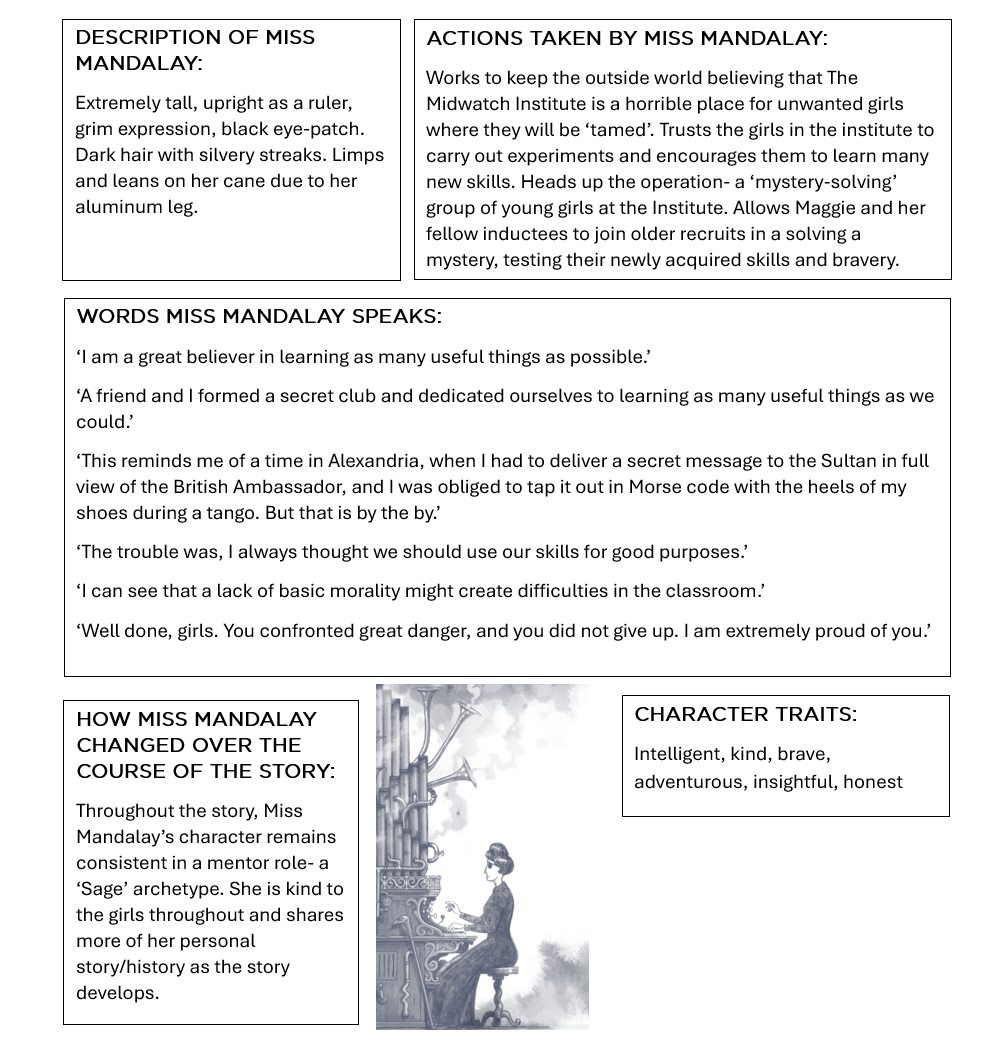
Think-alouds will help students to learn how to analyse a character in this way and provide support for them to be able to do this independently. For more information on character analysis, watch this video.
You could then ask students to choose another character from the text to complete this task.
Here is a blank template you could use: Character Analysis
Head to Hardie Grant for a list of stockists.
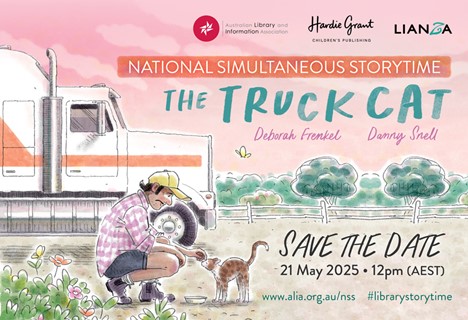
Next time, I will be sharing Stage 1 teaching ideas for this year’s National Simultaneous Story Time book, The Truck Cat written by Deborah Frenkel, illustrated by Danny Snell.